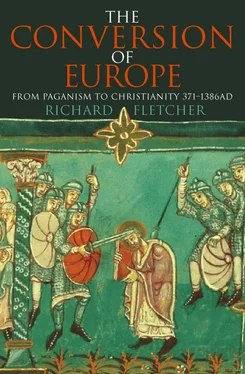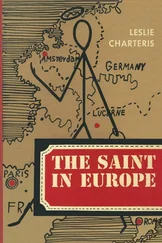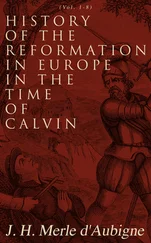And he concludes with a call to repentance and the replacement of these pagan practices with Christian ones. Martin of Braga was not a man, we might judge, subject to self-doubt. But his castigation makes very plain the difficulty, not indeed for him but for the modern historian, of drawing hard-and-fast boundaries between Christian and pagan, religion and superstition, piety and magic, the acceptable and the forbidden. It is a salutary reminder of the penumbral ambiguities of our subject.
Martin’s tract, like the sermons of Caesarius, circulated widely: we shall meet it again. Admonition of this sort by individuals was reinforced by the collective voice of bishops assembled in church councils, formally condemning non-Christian practices and commending Christian ones. The sheer amount of attention devoted by the ecclesiastical authorities of this period to the quality of Christian observance is cumulatively impressive. Martin of Braga’s views on the sinfulness of celebrating the Kalends of January were echoed by the bishops assembled at Tours in 567, by a diocesan synod held at Auxerre in the latter part of the sixth century, and by the Spanish bishops gathered for the fourth council of Toledo in 633. All sorts of divination and soothsaying and augury-reading were repeatedly condemned. By way of example, consider one type of practitioner referred to in our texts as an ariolus (plural arioli ). Isidore of Seville, whose great work, The Etymologies , was the nearest thing to an encyclopaedia that the early Middle Ages produced, informs us that ‘ arioli are so called because they utter impious prayer at the altars [ aras ] of idols, and offer deadly sacrifices, and accept instructions from the swarms of demons.’ Caesarius of Arles and Martin of Braga told their hearers to shun the ariolus. So did the civil law: no one should consult an ariolus , ruled the Theodosian Code promulgated in 438. But people plainly did. Gregory of Tours tells a story that is apposite here. 10 A young man named Aquilinus was out hunting with his father when he experienced some sort of seizure; he had a violent fit of trembling and then fell down in a coma. His kinsfolk recognized this as the work of the Devil and feared that a spell had been laid on him by an enemy. So they called in arioli , ‘as is the way of country people’ ( ut mos rusticorum habet ), who tied on ligatures and administered medicines; but in vain. Only then did the family take the boy to the shrine of St Martin at Tours where – need we say? – he was cured. This is a most interesting story. The ariolus in this context is the person of first recourse when the inexplicable disaster has occurred and foul play is suspected. We may call him, if we so desire, a witch doctor, but need to recognize that this is a loaded and therefore limiting term. There is no suggestion that the kinsfolk of Aquilinus were anything but Christian, yet it is to the ariolus that they first turn. Gregory reports this without apparent surprise or explicit condemnation, though there is implicit lamentation over their ‘rusticity’. But it wasn’t only rustics who resorted to arioli. In Spain at least it would appear that the clergy were not above doing so. The bishops assembled at Toledo in 633 – under the presidency of Isidore, no less – forbade bishops, priests, deacons or anyone whomsoever in clerical orders to consult arioli or other types of magician, augur, diviner or soothsayer. What intriguing complications are hinted at by this decree: further suggestions of frontiers obscurely blurred.
Now from the prohibitive to the positive: let us take, from manifold possibilities, sabbath observance and the sign of the cross. Church councils repeatedly enjoined the observance of Sunday by abstinence from labour: at Orléans in 538, at Mâcon in 585, at Narbonne in 589. So too did Martin of Braga in De Correctione Rusticorum. Moralists were at hand with gruesome tales of what might happen to transgressors. Gregory of Tours told a story of a man who, while on his way to church one Sunday, saw that animals had strayed into his field and done damage to his crops. He took up an axe to do some fencing to block the gap through which the beasts had strayed. His arm was instantly paralysed and remained so until it received massage treatment from the holy man Senoch. In another tale he told of a girl who combed her hair on a Sunday; the teeth of the comb rammed themselves into her palm, causing her great pain, until she prayed at the tomb of St Gregory of Langres.
Devotion to the cross was stimulated by the discovery of the. True Cross early in the fourth century, attributed to the Empress Helena, mother of Constantine. Having been rare before, from the fourth century the cross began to be a frequent motif in Christian art – for example, on gravestones. We have already seen Martin deflect a falling tree simply by making the sign of the cross. It was presented by Gregory of Tours as an unfailing source of help for the pious in any emergency. The hermit Caluppa was once cornered in his cave in the Auvergne by two dragons: he put them to flight with the sign of the cross (though one of them farted defiantly as it lumbered out of the cave’s mouth). When the holy abbot Portianus was forced to have a drink with the evil Sigivald he made the sign of the cross, the cup shattered and a snake slithered out of the spilt wine. Gregory also tells us an interesting story of some sceptics. It occurs in his account of the recluse Friardus.
He passed his whole life praising God, in prayer and in vigils. He took from the earth with his own hands what he needed for his subsistence, and although he excelled others by his hard work he never ceased to pray. And so for his neighbours and for strangers, for such is the way of country people [rusticorum] , he was the object of much ridicule. One day he was in a field cutting corn and tying it into sheaves along with the other harvesters, and a swarm of those annoying and fierce flies which are commonly called wasps came by. They bitterly attacked the harvesters, pricking them with their stings, and surrounding them on all sides, and so the men avoided the place where the nest was. And they mocked the blessed Friardus, saying to him slyly, ‘May it occur to the blessed man, the religious man, who never ceases to pray, who always makes the sign of the cross on his ears and eyes, who always carries the standard of salvation with him wherever he goes, that he harvest near the nest and tame it with his prayer.’ The holy man took these words as a slur upon divine power, and he fell to the ground in prayer to his Lord. Then he approached the wasps and made the sign of the cross over them, saying ‘Our help is in the name of the Lord who made heaven and earth.’ As this prayer left his mouth the wasps all hurried to hide themselves inside the hole from which they had come, and Friardus cut the stalks by the nest without harm, in the sight of all. 11
Friardus lived on an island in the estuary of the Loire not far from Nantes. Yet it is clear from what Gregory tells us of him that he had contact with the local people and influence upon them. It is also clear that there were perhaps surprisingly many such drop-outs from conventional society in the Gaul of Gregory’s day. Was this also the case in other western provinces of the former empire, which produced no Gregory of Tours to enlighten and enliven us? Cross the Pyrenees into Spain and consider the case of Emilian. We know a fair amount about him because his life was written by Braulio, pupil of Isidore and bishop of Saragossa, in about 635; Braulio’s brother Fronimian was abbot of the monastery which had grown up on the site of Emilian’s hermitage. 12 Emilian was a shepherd in the Rioja who was fired by a vision to devote his life to God. He sought out a hermit named Felix who lived near Haro for instruction. Having learned all that he could from Felix, Emilian returned to the Rioja and settled as a hermit at Berceo. Troubled by the multitude of people who flocked to him, Emilian retired (like Antony retreating further into the Egyptian desert) into the mountainous recesses of the Sierra de la Demanda. But his holiness could not be hidden. The local bishop, Didymus of Tarazona, sought him out, desiring to make him a priest. (Reading between the lines one may suspect a case of friction between bishop and hermit, not without parallels in this and other periods. Did the bishop want to regularize the position of this highly unconventional figure?) With reluctance Emilian agreed to be ordained to minister in the church of Berceo. We learn that he had clerics (in the plural) under him there, so we may infer that this was a small community of clergy with responsibility for a wide area round about, like the communities which served Martin’s churches in Touraine. He was an exemplary priest – ‘unlike those in our own times’, comments Braulio. Indeed in some respects he was too good, or perhaps he did not hit it off with his clergy, or perhaps he was just hopeless at administration. Whatever the reason, his clerics accused him before the bishop of squandering the possessions of his church (in charitable giving, as Braulio insists). The bishop relieved him of his cure and Emilian retired to his hermitage for the remainder of his long life. He died in 573.
Читать дальше












